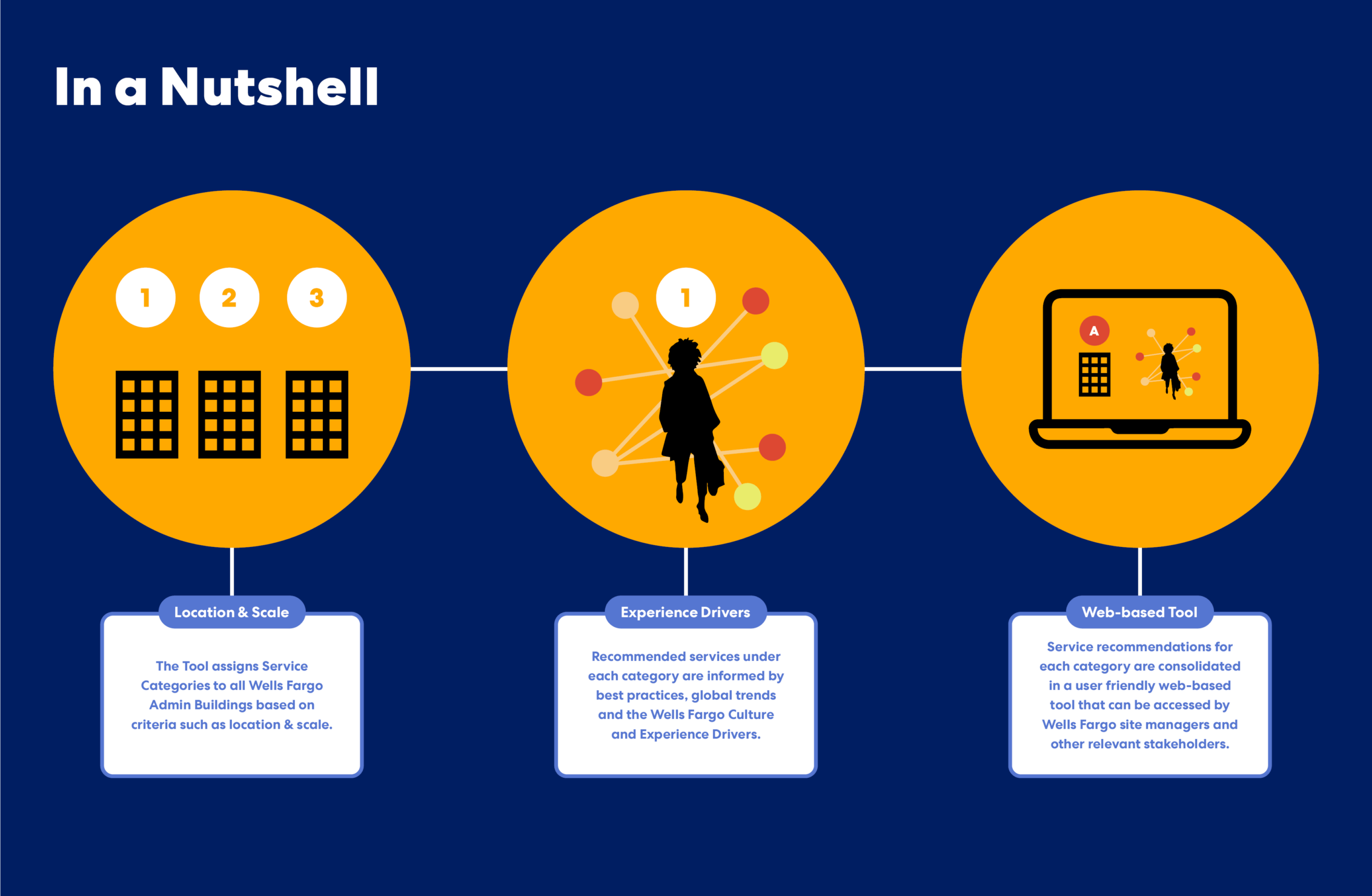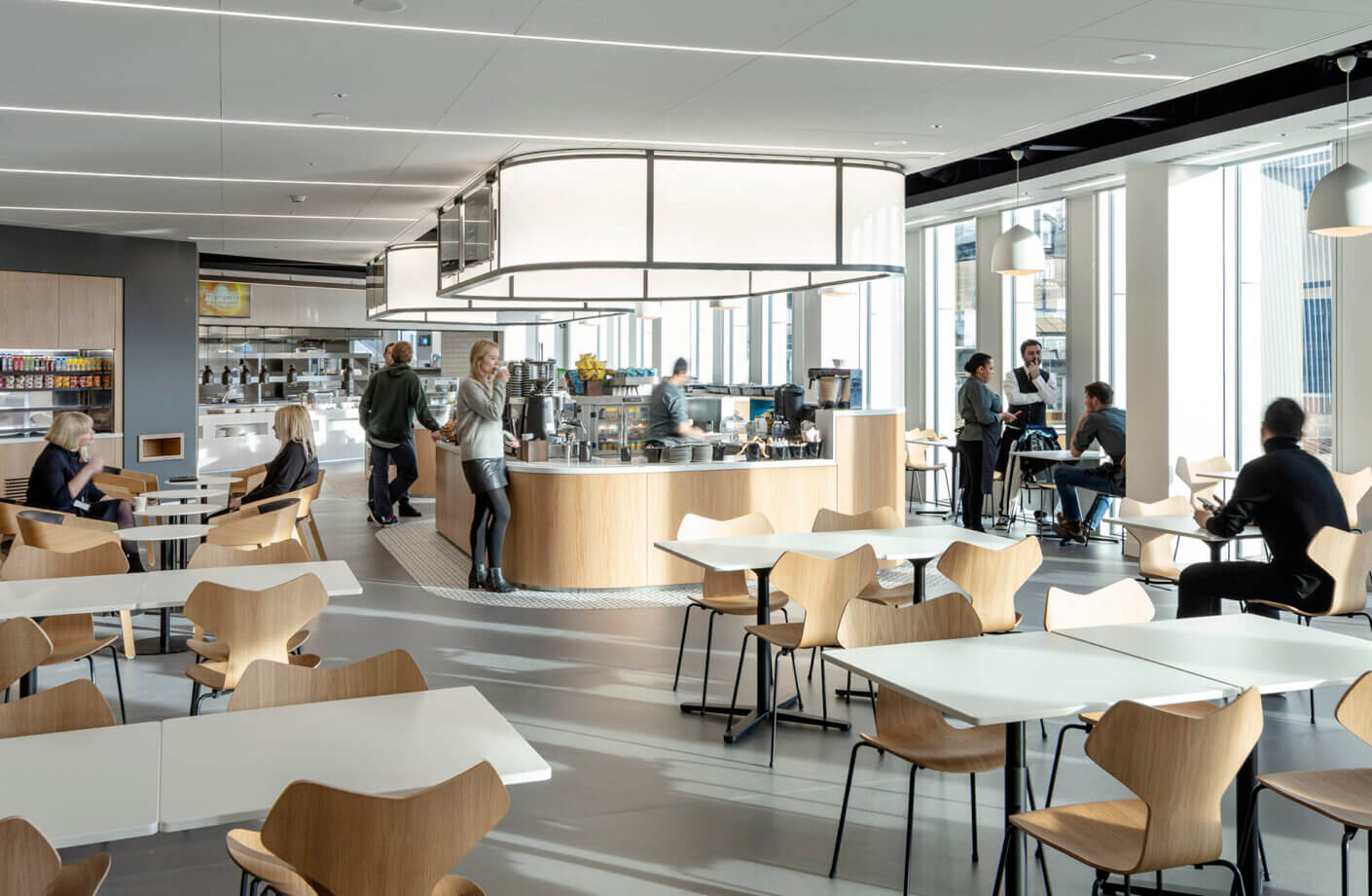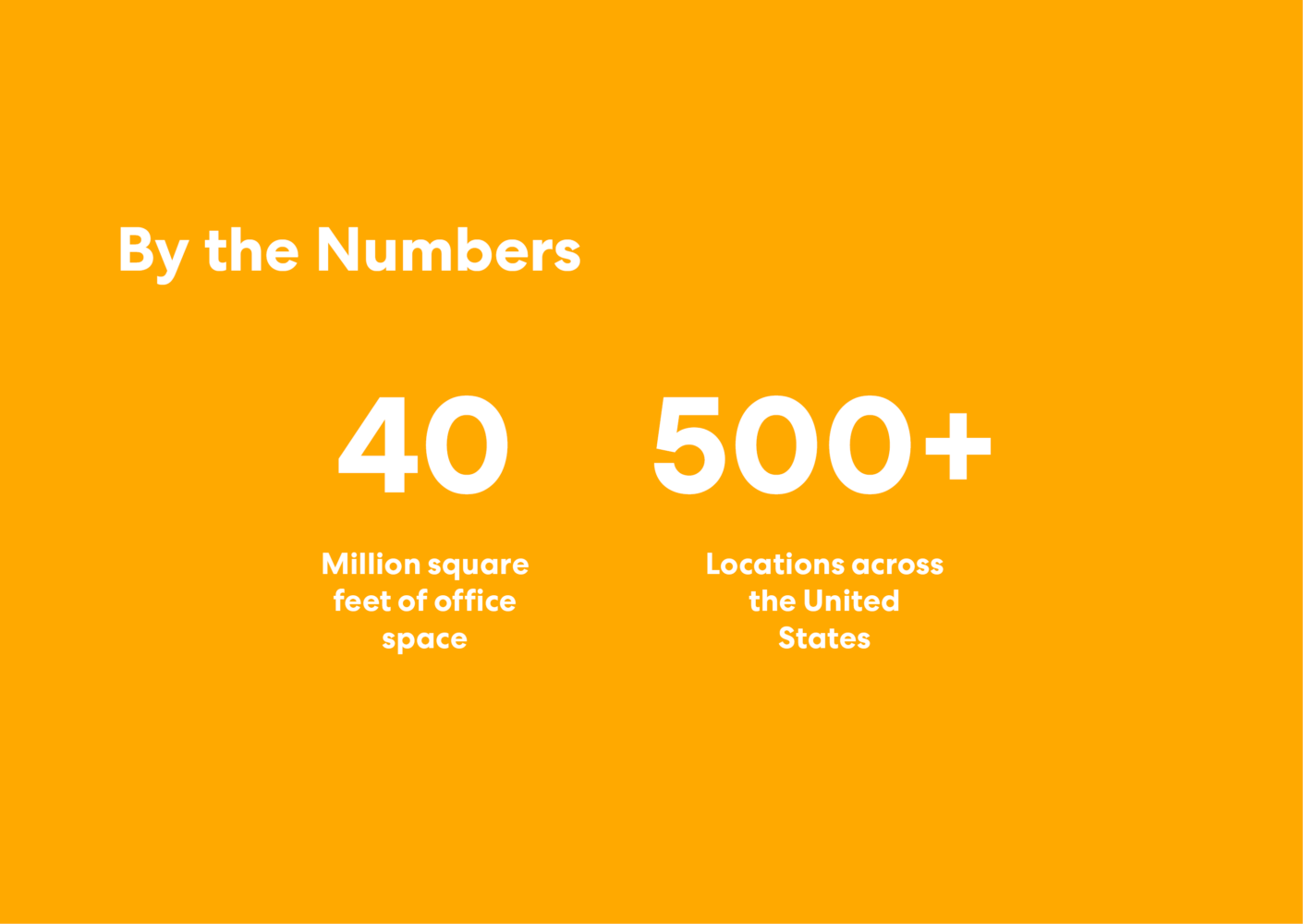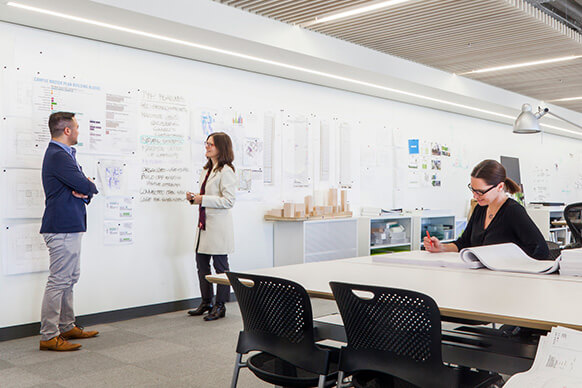Creating a Portfolio-wide Employee Services Strategy
Wells Fargo, one of the largest banks in the world, wanted to provide consistently exceptional spaces, services, and programs for its employees across hundreds of locations and 40 million square feet in the U.S. These offerings were viewed as a reflection of Wells Fargo’s values and commitment to employees. For example, as part of their commitment to holistic well-being, they wanted all employees to have convenient access to healthcare facilities like an onsite clinic or an urgent care center near their workplace.
The goal was to ensure that relatively consistent programs and services would be available to support all employees, no matter where they worked. But with such a large real estate portfolio, and without a clear way to define and categorize amenities and programs, leaders found it difficult to manage and communicate about the employee experience.

We undertook a five-step approach to clearly define goals and share recommendations for each site. First, we conducted research to determine which employee services were desirable across all Wells Fargo locations. Then we identified experience drivers, like innovation, that would serve as touchpoints for evaluating services. We developed portfolio-wide service recommendations and created categories for properties across the portfolio that incorporated Walk Score, scale, and other factors. Finally, we developed a toolkit that organized and displayed the data we had generated.

The framework analyzes data on climate, security, walkability, wellness, and demographics to help designers and decision-makers consider how company-provided services at a given location could complement existing resources like coffee shops, parks, gyms, and services. Decision-makers can filter recommendations based on their priorities: For instance, they can get recommendations specifically for populations concerned with neighborhood security, young populations looking for connections, and family-focused populations.
The toolkit, which includes an online dashboard, is part of the larger framework. It identifies the recommended employee services package for all Wells Fargo administrative buildings based on scale and access to urban services. It is intended to help site managers and other stakeholders identify gaps or strengths in their current service offerings and set a plan of action to get to the desired state.

Plan and prioritize
Helps the corporate real estate team audit existing services and develop a plan for improved experiences.
Build a business case for investment
Helps site managers build a business case and get buy-in from leadership to invest in new employee services.
Expand awareness
Helps site managers identify existing or ongoing services and amplify their impact by connecting to Wells Fargo’s corporate communications strategy.
Site selection
Informs the corporate real estate team’s site selection processes in light of existing and recommended services.
Space renovations
Helps site managers and the corporate real estate team verify the level of recommended services prior to renovations or new construction.


Overall, the framework simplifies design decisions and results in workplaces that reflect the Wells Fargo brand, embody a familiar look and feel, and integrate with the community. “We’re all about enhancing the employee experience, and continuously refining and evolving our approach to meet workplace needs,” says Darius Miranda, vice president and strategy consultant for corporate real estate and workplace experience at Wells Fargo.



